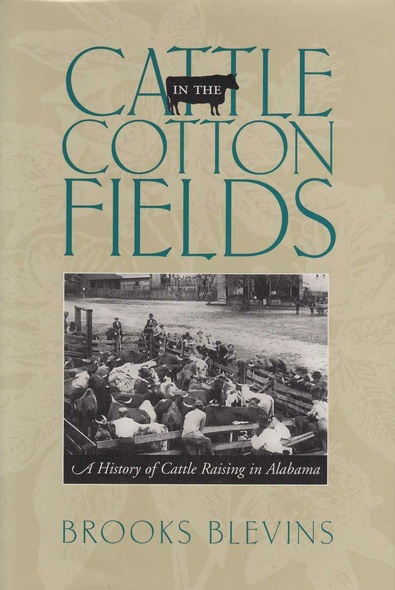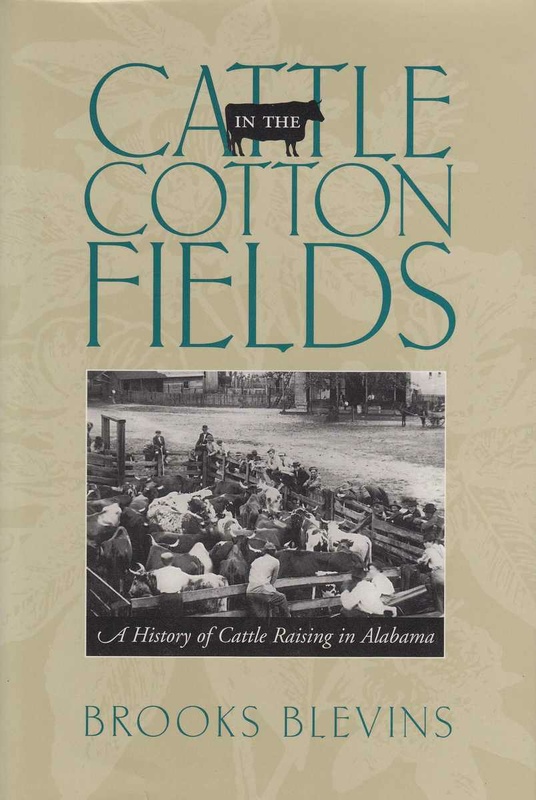Cattle in the Cotton Fields
A History of Cattle Raising in Alabama
University of Alabama Press
This first history of cattle raising in a southern state documents the development of the industry within Alabama from colonial times to the present within the broader contexts of southern and American agricultural history
Cattle raising today is the most widely practiced form of agriculture in Alabama and ranks second only to the poultry industry in terms of revenue. Brooks Blevins not only relates the development and importance of the industry to agricultural practices but also presents it as an integral component of southern history, inextricably linked to issues of sectional politics, progressivism, race and class struggles, and rural depopulation. Most historians believe cattle were first introduced by the Spanish explorers and missionaries during the early decades of the 16th century. Native Americans quickly took up cattle raising, and the practice was reinforced with the arrival of the French and the British. By 1819--after massive immigration of Anglo-American herders, farmers, and planters--cattle played an integral role in the territory's agriculture and economy. Despite the dominance of the cotton industry during the antebellum period, cattle herding continued to grow and to become identified as an important part of the region's agriculture.
Cattle raising today is the most widely practiced form of agriculture in Alabama and ranks second only to the poultry industry in terms of revenue. Brooks Blevins not only relates the development and importance of the industry to agricultural practices but also presents it as an integral component of southern history, inextricably linked to issues of sectional politics, progressivism, race and class struggles, and rural depopulation. Most historians believe cattle were first introduced by the Spanish explorers and missionaries during the early decades of the 16th century. Native Americans quickly took up cattle raising, and the practice was reinforced with the arrival of the French and the British. By 1819--after massive immigration of Anglo-American herders, farmers, and planters--cattle played an integral role in the territory's agriculture and economy. Despite the dominance of the cotton industry during the antebellum period, cattle herding continued to grow and to become identified as an important part of the region's agriculture.
In the early decades of the 20th century, the boll weevil drove many planters out of the cotton business. These planters adopted a midwestern model of cattle raising consisting of purebred English breeds, enclosed pastures, scientific breeding and feeding practices, and intimate cooperation among cattlemen, government agents, and business interests. This model of farming gradually replaced the open range herding tradition.
‘In Cattle in the Cotton Fields, Brooks Blevins traces the changing roles of beef and dairy animals in Alabama, from their introduction by the Spanish in the mid-1500s to the 1990s. The book is a competent, well-organized history of cattle in Alabama that begins with openrange- woods ranching on the colonial frontier and continues through the contemporary period of cattle production by part-time farmers. . . . Cattle in the Cotton Fields is the only book that describes contemporary beef cattle production in a southern state and traces the history of cattle from their introduction to their present role in agriculture.’
—The Business History Review
‘Brooks Blevins is to be complimented for writing a detailed and comprehensive history of the cattle industry in Alabama. . . . In addition to providing details of agricultural development in Alabama, this book should be of interest to those studying the agricultural history of the South.’
—The Arkansas Historical Quarterly
'This first book-length study of Alabama cattle-raising is an essential contribution to Alabama's agricultural history.'
—J. S. Otto, Bowie State University
Brooks Blevins is the Noel Boyd Professor of Ozarks Studies at Missouri State University. He is the author of five books, including Arkansas/Arkansaw: How Bear Hunters, Hillbillies, and Good Ol' Boys Defined a State and Ghost of the Ozarks: Murder and Memory in the Upland South, both of which won the Arkansas Historical Society’s Ragsdale Award. He is also the author of Hill Folks: A History of Arkansas Ozarkers and Their Image.






